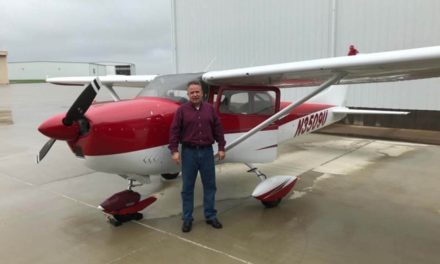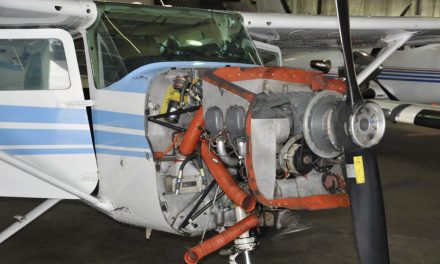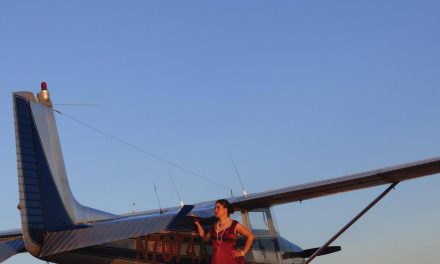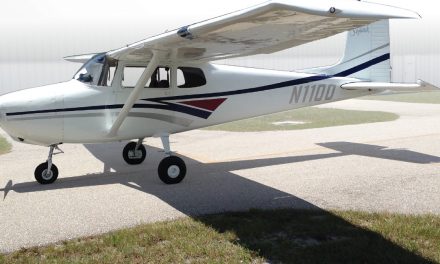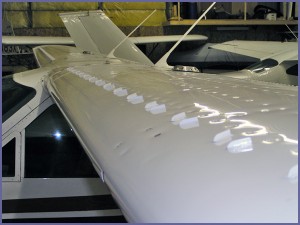 What to Know BEFORE You Go
What to Know BEFORE You Go
Sponsored by AirMart, Inc. – www.AirMart.com
How to Make an Amazing Machine EVEN BETTER!
Ah, the Cessna 206, what an amazing machine. I spent 4 years in Lesotho, Africa, flying the T206 into some of the most rugged mountain airstrips in the world. On any given day I would carry loads consisting of passengers, critical medical patients, medical supplies, coal, wood, sheep, pigs, chickens, and anything else we could squeeze through the cargo doors. There’s just no other machine like it. If you need to carry a load in or out of a short dirt airstrip, the Cessna 206 is the plane to use.
Most of my time was in the earlier 206G model, but since I’ve been back in the U.S., I’ve had many opportunities to fly the T206H. When Cessna started making the 206H, they made quite a few changes in the design—most of which, I feel, are for the better.
Among the more noteworthy of these changes was swapping the engine from the 300HP Continental 520 to the Lycoming 540. While Continentals did a great job for us in the rough environment we operated in, I did have to change a lot of cylinders. If operated properly, the Lycoming engines that the 206 is equipped with now should go the full TBO on one set of cylinders—and still with 300HP (310 for the turbo).
Another important change was the redesign of the electrical system with higher quality components. This was a much needed change that Cessna incorporated into all their piston aircraft in the mid ‘90s.
The other significant change was updating to a more “executive” style interior. Some see this as a plus, while others do not. Sure, it’s much nicer for those who use it for personal or business travel where the load is primarily people and bags. However, the rear seat is difficult to remove and the interior is much heavier. This cuts into the useful load. Also, I would now think twice before loading it up with sheep, pigs, and coal like I did in Lesotho!
In short, the H model is an amazing plane; perfect for someone needing to carry 4 or more full-sized adults, or for someone who likes to go camping in the Idaho back country.
So how does one take a great machine like the 206 and make it even better? Here are three options to consider:
- Belly Cargo Pod: Personally, this is probably the first mod I would make to a 206. It gives you so many options when loading the plane. Have you ever seen a heavily loaded 206 taxiing across the ramp and it looks like its tail is going to drag on the ground? That’s a common look for a gross weight 206 loaded to the rear CG. With a cargo pod, you can rearrange your load by placing the heavier bags in the pod, thus moving the CG forward. If you’re using the plane to go camping and fishing, all the dirty and smelly stuff can go in the pod. And, amazingly, the pod doesn’t affect the cruise speed by more than a knot or two.
- Flint Tip Tanks: I like these for two reasons. First, they give you an extra 29.8 gals of usable fuel—that’s about 1.5 – 2 hours of additional flying. Since you’re not moving along quite as fast as your friends in the SR22, it’s nice to have that additional flying time. (While it may be true your friends in the SR22 will get there before you do, just remind them that they had to ask you to carry half their stuff!) The second thing the Flint tanks give you is a 200-pound increase in gross weight from 3600lbs to 3800lbs. Of course, if you fill the tanks full, the extra load will all be used up with the extra fuel. However, if you don’t need the fuel, you can use the load increase for people, bags, or cargo.
There are a few things, however, to keep in mind when considering the Flint tank mod:
- Your wing span will increase by 36 inches. Make sure you measure your hangar door opening first!
- When the tanks are full, it does change the “feel” of the plane some. There’s quite a bit of weight on the wing tips, so it can cause the plane to rock some and have a heavy aileron feel. It’s never bothered me, but I’ve heard some pilots complain about it.
- You need to check the serial number on your 206H. There are a few that require Cessna SBAI 206-57-01 accomplished before it is eligible for the gross weight increase. In a nutshell, this SBAI requires a stiffener in the right wing to be checked. If it has to be changed, it’s quite involved.
- Vortex Generators: these are the little metal blades you see glued on the top of many wings. Basically, as the name implies, they generate little vortices in the boundary layer of air moving over the top of the wing. At cruise speeds, they don’t have any measurable effect. But, at slow speeds and higher angles of attack, the vortices keep the boundary layer of air from separating from the wing. This gives the pilot much better control at speeds near stall, and it lowers the stall speed by as much as 10%. If you’re planning to operate in short airstrips or high-altitude strips in the mountains, vortex generators can significantly improve your safety margins. They are, however, easily broken or bent, especially while washing the plane. I would recommend you keep a few extra blades on hand. These are easily glued into place by your A&P.
Cessna describes the 206 as “the sport utility vehicle of the air.” In my experience it’s that—and more. With the design improvements of the 206H and a few well planned modifications, the workhorse that could carry a load of sheep in and out of a short dirt strip can just as easily be outfitted to carry adventure seekers (and their gear) to interesting new places or upgraded with luxury appointments to take executives to that next big meeting. There’s just no other machine like it.

